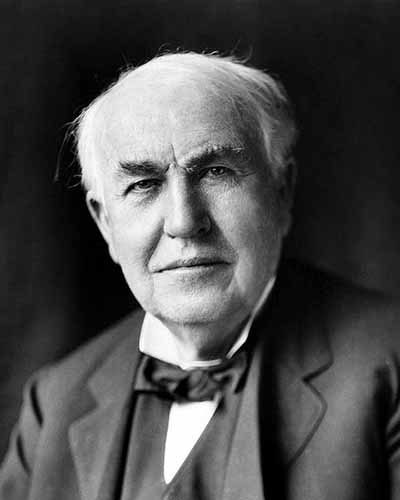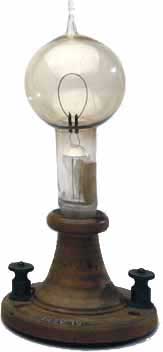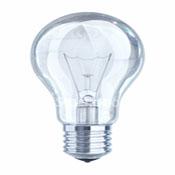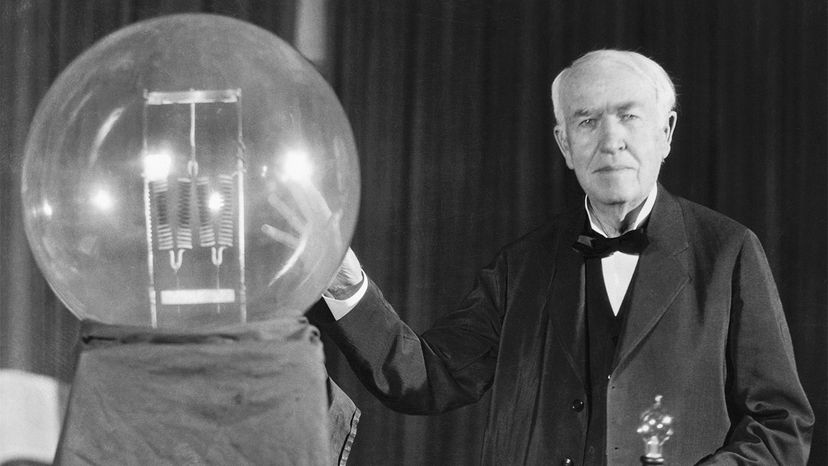1) Вставьте слово, которое грамматически будет соответствовать содержанию текста.
A hungry wolf
An old nurse was putting a baby to bed. She ___ (TELL) the boy to be quiet otherwise she would give him to a wolf.
2) Вставьте слово, которое грамматически будет соответствовать содержанию текста.
But the child ___ (SCREAM) even more and more loudly.
3) Вставьте слово, которое грамматически будет соответствовать содержанию текста.
The wolf heard the screams and thought to himself, “I ___ (NOT HAVE) any lunch yet. This boy is just what I need.” But the old nurse shut the door and all the windows, and the wolf had to go away. Never trust enemies’ promises.
4) Вставьте слово, которое грамматически будет соответствовать содержанию текста.
The invention of the light bulb
Every person in the world knows about Thomas Edison. The electric light bulb ___ (INVENT) by this famous scientist.
5) Вставьте слово, которое грамматически будет соответствовать содержанию текста.
The electrification of the modern world profoundly changed human life, ___ (ILLUMINATE) the night.
6) Вставьте слово, которое грамматически будет соответствовать содержанию текста.
The ___ (ONE) electric bulb made it possible for people to continue their usual day activities after dark.
7) Вставьте слово, которое грамматически будет соответствовать содержанию текста.
Edison started with a 40-hour life light bulb and finally made a bulb that lasted for 1500 hours. This certainly revolutionized human ___ (LIFE) at that time.

Uluru
Uluru (often called Ayers Rock) is located deep in the outback in central Australia. It’s considered a sacred site by the Aborigines. ___ (VISIT) can reach the area by a 200 km car trip after flying into Alice Springs, Darwin or Adelaide.
9) Вставьте слово, которое грамматически и лексически будет соответствовать содержанию текста.
The area includes many breathtaking ___ (NATURE) wonders and reveals much about the legends and mysteries of Aboriginal people.
10) Вставьте слово, которое грамматически и лексически будет соответствовать содержанию текста.
Located in the Red Centre, Uluru is one the most ___ (FORGET) sights in Australia.
11) Вставьте слово, которое грамматически и лексически будет соответствовать содержанию текста.
Here you can learn more about the cultural ___ (SIGNIFICANT) of the area, you can do a base walk and meet some of the local wildlife (get ready for the Australian face fly), and you can take more photos than you thought possible.
12) Вставьте слово, которое грамматически и лексически будет соответствовать содержанию текста.
___ (ACCOMMODATE) ranges from budget to luxury.
13) Вставьте слово, которое грамматически и лексически будет соответствовать содержанию текста.
There are even ___ (CAMP) opportunities if you’re brave enough for that!
14) Запишите в поле ответа цифру 1, 2, 3 или 4, соответствующую выбранному Вами варианту ответа.
A nice surprise
Dotty called her friend’s mother Miranda, who was really pleased to hear her voice when she picked up the phone. ___, Miranda was surprised to find out that Dotty wanted to talk to her, not her daughter.
1) Otherwise
2) However
3) Therefore
4) Although
15) Запишите в поле ответа цифру 1, 2, 3 или 4, соответствующую выбранному Вами варианту ответа.
Somebody had sent Dotty’s stories to the magazine and the editors sent her a letter offering to publish her work. They asked her to telephone them and ___ a meeting in London. Dotty was curious if that was Miranda who had sent her story to the magazine. She quickly explained to the woman what had happened.
1) propose
2) suggest
3) consent
4) arrange
16) Запишите в поле ответа цифру 1, 2, 3 или 4, соответствующую выбранному Вами варианту ответа.
When the girl had finished, there was a silence for a moment before Miranda asked, “Are you very annoyed with me, Dotty? I know I shouldn’t have done that without your ___, but you have such a talent for writing and I thought you should be recognised.
1) permission
2) promise
3) proposal
4) possibility
17) Запишите в поле ответа цифру 1, 2, 3 или 4, соответствующую выбранному Вами варианту ответа.
I’m not ___ all surprised that the magazine wants to publish you.”
1) on
2) in
3) at
4) by
18) Запишите в поле ответа цифру 1, 2, 3 или 4, соответствующую выбранному Вами варианту ответа.
“No, I’m not annoyed. More shocked, I think,” Dotty admitted. “I’m not too sure about the trip to London though. To ___ the truth, I’ve never ventured that far away on my own before.”
1) speak
2) say
3) tell
4) talk
19) Запишите в поле ответа цифру 1, 2, 3 или 4, соответствующую выбранному Вами варианту ответа.
“Oh, you’ll be absolutely fine,” Miranda said confidently. “But I could always come with you if you liked. I’m certainly not going to let you miss this opportunity. Look, why don’t you come here for tea after work tomorrow with Anna and we’ll discuss it then. But meantime ___ sure you ring them first thing in the morning.”
1) gain
2) make
3) keep
4) take
20) Запишите в поле ответа цифру 1, 2, 3 или 4, соответствующую выбранному Вами варианту ответа.
Dotty promised her that she would and went to bed ___ by this surprise.
1) included
2) inspired
3) inclined
4) involved
Введите ответ в поле ввода
Задание 22286
The
invention of the light bulb
|
Every person in the world knows about |
INVENT |
Прочитайте приведённые ниже тексты. Преобразуйте, если необходимо, слова, напечатанные заглавными буквами в конце строк, обозначенных номерами 19–25, так, чтобы они грамматически соответствовали содержанию текстов. Заполните пропуски полученными словами. Каждый пропуск соответствует отдельному заданию из группы 19–25.
Решение:
wasinvented
Другие задачи на эту тему
Прочитайте текст. Выберите подходящее по смыслу слово из предложенных. B ответ запишите слово в той форме, в которой оно должно стоять в предложении. Помните, что каждое слово может быть использовано только один раз и что заданную форму слова необходимо изменить. Заполните пропуск (B2).
ELECTRIC, BENEFIT, SOLVE, LIKE
Thomas Edison knew his new invention, the lightbulb, would be revolutionary, but it’s (B1) … that he realised quite how much the introduction of (B2) … would affect the kitchen. The modern kitchen is overflowing with electrical appliances. For a busy parent whose kids are hungry, the simplest (B3) … these days is to take some frozen food out of the freezer and pop it in the microwave. It’s been particularly (B4) … for women — no longer do they have to stay all day chained to the cooker and the kitchen sink.
1
Прочитайте текст. Выберите подходящее по смыслу слово из предложенных. B ответ запишите слово в той форме, в которой оно должно стоять в предложении. Помните, что каждое слово может быть использовано только один раз и что заданную форму слова необходимо изменить. Заполните пропуск (B1).
ELECTRIC, BENEFIT, SOLVE, LIKE
Источник: Централизованное тестирование по английскому языку, 2011
2
Прочитайте текст. Выберите подходящее по смыслу слово из предложенных. B ответ запишите слово в той форме, в которой оно должно стоять в предложении. Помните, что каждое слово может быть использовано только один раз и что заданную форму слова необходимо изменить. Заполните пропуск (B3).
ELECTRIC, BENEFIT, SOLVE, LIKE
Источник: Централизованное тестирование по английскому языку, 2011
3
Прочитайте текст. Выберите подходящее по смыслу слово из предложенных. B ответ запишите слово в той форме, в которой оно должно стоять в предложении. Помните, что каждое слово может быть использовано только один раз и что заданную форму слова необходимо изменить. Заполните пропуск (B4).
ELECTRIC, BENEFIT, SOLVE, LIKE
Источник: Централизованное тестирование по английскому языку, 2011
Спрятать пояснение
Пояснение.
Грамматический контекст требует существительного, лексический-— слова, обозначающее какое-то новое явление (после слов «introduction of»). Это слово «electricity».
Ответ: electricity
Источник: Централизованное тестирование по английскому языку, 2011
Electricity & Energy – The Light Bulb
by ReadWorks
Thomas Edison holding a light bulb
Thomas Edison invented the first commercially successful light bulb in 1879. Ironically, barely anyone in America had access to electricity. They couldn’t use the new invention. Edison worked to solve this problem. He helped develop power plants so that they could distribute electricity over wires to homes and businesses. Once electricity reached customers across the nation, everyone had light bulbs.
Light bulbs literally changed the way people lived. Before, people strained to read by candlelight. Now, they could read comfortably with adequate light. The invention of the light bulb also led to the invention of other electrical items. Soon, refrigerators and electric heaters also helped people live more easily, and radios entertained people.
Imagine what your life would be like without light bulbs. You would have to keep a lot of candles at home. The streets would be sometimes so dark you probably would not go out after sundown. A simple little light bulb has made all the difference in the world. It has created a high level of convenience and security for the human race.
Vocabulary
adequate ad · e · quate
Definition
adjective
- enough; as much as needed.
Is your paycheck adequate?
Advanced Definition
adjective
- good enough or well enough suited for the situation or need; satisfactory.
Make sure the children have adequate clothing for the winter weather.
- just barely good enough.
As a teacher, he was adequate, but nowhere near excellent.
- sufficient in quantity; enough.
The army had adequate supplies for the campaign. The new instructors don’t have adequate experience.
Spanish cognate
adecuado: The Spanish word adecuado means adequate.
These are some examples of how the word or forms of the word are used:
- Now, they could read comfortably with adequate light.
- Kyle always imagined them moving faster, since they had to generate electricity, but his mom assured everyone that this was enough speed to produce adequate energy for the area.
barely bare · ly
Definition
adverb
- almost not at all.
Please speak louder. I can barely hear you.
Advanced Definition
adverb
- only just; hardly.
Please speak louder. I can barely hear you.
- sparsely
barely dressed.
barely equipped troops
These are some examples of how the word or forms of the word are used:
- She could barely breathe after falling down the steps and onto the cold concrete.
- He could barely contain his excitement.
- The temperature would barely rise or fall throughout the year.
- As it was now, Angelica’s hair barely reached below her ears, and she couldn’t put it up at all anymore because she’d just gotten a haircut.
- Ironically, barely anyone in America had access to electricity.
- When Captain John Smith returned from a trip to England, he found that the colony was barely surviving.
- Washington never gave up, even during the bitter winters when he and his troops had barely enough food or supplies to survive.
- Angelica could barely keep up, Sally was running really fast.
strain strain
Definition
verb
- to bring something close to its breaking point.
Their frequent arguments strained their marriage.
- to hurt or injure something by using it too much.
He strained a muscle while playing softball.
- to remove the solid things from a liquid.
She strained the vegetables for her baby.
- to pull with energy or force.
The dog strained on its leash.
noun
- an injury caused by putting too much force on a muscle.
The strain in his back was caused by lifting heavy boxes.
Advanced Definition
transitive verb
- to pull or stretch to a high degree of tension.
- to exert or extend to the maximum.
- to push beyond limit, reason, or endurance.
- to injure, impair, or weaken by excessive stress.
He strained a muscle during practice.
- to cause through stress, mechanical failure of.
- to pass (a substance) through a sieve or filter.
The chef strained the sauce.
- to remove (something) by filtering.
The chef strained the lumps from the sauce.
intransitive verb
- to pull energetically or forcibly.
- to expend the maximum amount of effort; strive.
- to put one’s nerves and muscles under the maximum amount of stress.
- to filter, trickle, or percolate through something.
noun
- the act or process of straining.
- the condition of being strained.
- an injury or impairment resulting from placing too much stress on some part of the body.
- extreme pressure or force, sometimes causing harm or deformity.
- severe or exhausting emotional pressure.
These are some examples of how the word or forms of the word are used:
- If you play tennis, you swing a tennis racket. That puts a lot of strain on your arm. If you switch to soccer, you give your arm a rest.
- Strain is the overuse of a body part.
- A strain is a torn or pulled muscle or tendon.
- Keeping your weight at a healthy level can keep your joints safe from extra strain, advises Letha Griffin, an orthopedist in Atlanta.
- Playing only one sport can put too much strain on the same muscle groups.
Name: ___________________________________ Date: _______________
1. When did Thomas Edison invent the household lightbulb?
A. 1879
B. 1875
C. 1883
D. 1885
2. What purpose does the last paragraph of the passage serve?
A. It shows that Thomas Edison was a leading inventor
B. It shows that peoples’ lives would be the same without the lightbulb or electricity
C. It shows the perspective of a world without the lightbulb or electricity
D. It how hard peoples’ lives were without the light bulb
3. Without electricity, it is most difficult to read at what time of day?
A. at noontime.
B. around 3 o’clock in the afternoon.
C. at 8 a.m.
D. at 10 p.m.
4. Read the following sentences: “Before, people strained to read by candlelight. Now, they could read comfortably with adequate light.”
The word adequate most nearly means
A. dark
B. good
C. bad
D. bright
5. The main idea of the passage is:
A. Thomas Edison’s invention of the lightbulb, electricity and how these inventions changed the way people lived
B. That lightbulbs and electricity changed Thomas Edison and peoples’ lives
C. That peoples’ activities were changed by the inventions of lightbulbs and electricity
D. That Thomas Edison and people were outdoors less because of the inventions of lightbulbs and electricity
6. How has the light bulb created a high level of convenience and security for people?
_______________________________________________________________________________
_______________________________________________________________________________
_______________________________________________________________________________
7. Were power plants necessary to help people use electricity? Explain.
_______________________________________________________________________________
_______________________________________________________________________________
_______________________________________________________________________________
8. Choose the word that best completes the sentence.
If there were no light bulbs, the streets would be sometimes so dark you probably would not go out after sundown.
A. both
B. then
C. even
D. either
9. Vocabulary Word: access: a way to enter or use.
Use the vocabulary word in a sentence
_______________________________________________________________________________
_______________________________________________________________________________
_______________________________________________________________________________
ReadWorks.org · © 2019 ReadWorks®, Inc. All rights reserved.
Definitions and sample sentences within definitions are provided by Wordsmyth. © 2015 Wordsmyth. All rights reserved.
Phụ huynh và học viên có thể xem đáp án (answer key) và download file PDF tại đây
Nguyễn Thanh Nhàn
Tốt nghiệp chuyên ngành Quản trị kinh doanh — Đại học Kinh tế Tp.HCM
Công tác tại Phòng Marketing — Anh ngữ du học ETEST
Có kinh nghiệm trong việc hướng dẫn lộ trình săn học bổng
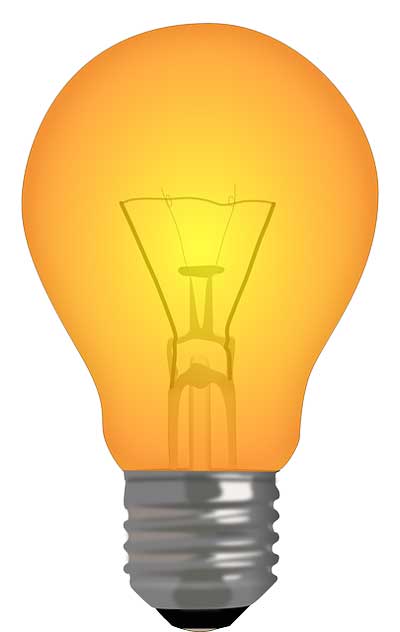
Early developments
The efforts to make a working light bulb went back to 1800. When an Italian scientist named “Alessandro Volta” during his experiments on the development of electric battery observed that, when a copper wire between the terminals of the battery is connected, it starts to glow due to the passing of electricity.
The first approach in the development of light bulb was made by Humphry Davy in 1802. When he connected the terminals of the battery to a carbon electrode (used as a filament), it started to glow. This glow didn’t last longer because filament burnt very quickly. His invention is known as “Electric arc lamp”.
Researches and developments on the light bulb were continued by many inventors. Some historians say that the light bulb was invented by 20 inventors before Thomas Edison, but no one was able to make an affordable and durable (long-lasting) design of the light bulb that can be brought into the market.
Thomas Edison – The First Practical Light Bulb
The Main problem in the developments of the light bulb was the filament (a conductor that emit light inside a light bulb), it didn’t last too long and melted in a short duration of time. Thomas Edison was very serious in the development of light bulb.
He started developing and testing new filaments that could last longer. He tested many materials including carbon, platinum, and other metals. He had developed a carbonized filament that lasted for 14.5 hours. Which proved him, he is going to the right way. He continued developing the filament that can last much longer. He had tried more than 3,000 designs of the light bulb and 6,000 different materials for the filaments.
Finally, he found that carbonized bamboo filament can last for more than 1,200 hours continuously. So, Edison used the carbonized bamboo filament in his light bulbs.
Edison became successful not because he had developed a durable filament, but he developed the whole system of electric lighting including the sockets and buttons for the light bulb. Also, he made world’s first power generating station in 1882.
Other inventors further improved the light bulbs and developed more durable filaments. Later, Edison’s filaments were replaced by these new filaments. Modern incandescent light bulbs use tungsten filaments, due to their high melting point.
Задание №8536.
Грамматика и лексика. ЕГЭ по английскому
Вставьте слово, которое грамматически будет соответствовать содержанию текста.
The invention of the light bulb
Every person in the world knows about Thomas Edison. The electric light bulb ___ (INVENT) by this famous scientist.
Решение:
The invention of the light bulb
Every person in the world knows about Thomas Edison. The electric light bulb WAS INVENTED by this famous scientist.
Изобретение лампочки
Каждый человек в мире знает о Томасе Эдисоне. Электрическая лампочка была изобретена этим известным ученым.
Показать ответ
Источник: ФИПИ. Открытый банк тестовых заданий
Сообщить об ошибке
Тест с похожими заданиями
Задание 22286
The
invention of the light bulb
|
Every person in the world knows about |
INVENT |
Прочитайте приведённые ниже тексты. Преобразуйте, если необходимо, слова, напечатанные заглавными буквами в конце строк, обозначенных номерами 19–25, так, чтобы они грамматически соответствовали содержанию текстов. Заполните пропуски полученными словами. Каждый пропуск соответствует отдельному заданию из группы 19–25.
Решение:
wasinvented
Другие задачи на эту тему
Другие вопросы по английскому языку
Английский язык, опубликовано 09.01.2019 16:01
Английский язык, опубликовано 09.01.2019 16:01
Английский язык, опубликовано 09.01.2019 16:01
Английский язык, опубликовано 09.01.2019 16:01
✅ Ответов: 3 на вопрос по английскому языку: 1. before the invention of the light bulb,people used people didn’t use 2. before the invention of the fridge,people used people didn’t use 3. before the invention of the television,people used people didn’t use 4. before the invention of the internet,people used topeople didn’t use to5. before the invention of the mobile phone,people used people d… ты найдешь на сайте. Также ты можешь добавить свой вариант ответа, если считаешь, что он не верен или твой ответ более полный. Пожалуйста, добавляй только правильные ответы.
Posted on August 27, 2009 by Jamie Slaughter, with 32767 views
The very first electric light was invented as early as 1800 by English inventor, Humphry Davy. Through various experimentations with electricity, he invented a basic electric battery, soon followed by electric light once he realised that carbon glowed, producing light when connected to the battery. This reaction is called an electric arc.
In 1860, Sir Joseph Wilson Swan set about attempting to develop a practical, long-lasting form of electric light. It was he who realised that carbon paper filament worked well, however did burn up relatively quickly. In 1878, his new lamp inventions were showcased in Newcastle, England.
1877 saw American Charles Francis Brush develop a series of carbon arcs in order to illuminate a public square in Ohio, USA. A few streets, some large office buildings and some stores all utilised electric lights, but the extent of usage was not at all common.
Typically credited as the ‘inventor of the light bulb’, Thomas Alva Edison experimented with thousands upon thousands of alternative filaments to find the best material for a long-lasting, high glow solution. 1879 was the year Edison finally realised that a carbon filament within an oxygen-free bulb glowed, but would not burn up for approximately 40 hours. Later, Edison invented a bulb that would not expire for over 1500 hours.
Lewis Howard Latimer improved upon Edison’s bulb with a new carbon filament which he patented in 1881. Latimer was part of Edison’s research team, termed «Edison’s Pioneers», and in 1882 began to manufacture and distribute his own carbon filaments.
At the turn of the century, in 1903, Willis R. Whitney introduced a ‘fix’ to the light bulb, so that the inside of the bulb would not darken as the filament began to glow, thus producing more vivid and bright light. William David Coolidge then invented a tungsten version of the traditional filament, which lasted longer than any other filament. This incandescent light bulb revolutionised the way in which we live today.
© 2022 Prezi Inc.
Terms & Privacy Policy
It is no exaggeration to say that the incandescent light bulb changed human civilization. With the advent of light bulbs, people could suddenly work and recreate deep into the night without relying on open flame (and its attendant heat, smoke and inherent danger) to illuminate a room.
While the impact of the electric light bulb is without dispute, the origins of the invention tend to be more open for debate. Conventional wisdom gives the credit to American Thomas Alva Edison, who obtained the earliest patents for incandescent light bulbs, the first in 1879 and the second in 1880. Yet some historians argue that it’s far too reductive to give Edison all the credit. They posit that Edison was the one who invented the light bulb, but it was simply one in a long string of similar inventions.
Others say that while Edison’s electric light bulbs did stand out from their forebears, even more credit should go to British inventor Sir Joseph Wilson Swan, who worked on incandescent lamps at the same time and later partnered with Edison. And yet another set of historians argue that this revisionist history is an overcorrection, and Edison is indeed the rightful inventor of the light bulb. So what is the answer?
Contents
- Precursors to Thomas Edison’s Electric Light Bulb
- Edison’s Breakthrough to the Practical Light Bulb
- Other Claimants to Inventing the Light Bulb
- So Who Really Invented the Light Bulb?
Precursors to Thomas Edison’s Electric Light Bulb
To assess just how much credit Edison deserves for light bulb design, we must examine the work of inventors who came before him. At the turn of the 19th century, Italian inventor Alessandro Volta pioneered concepts in controlling an electrical current, culminating in his «voltaic pile» which effectively functioned as a battery. If Volta’s name sounds familiar, it may be because the electrical measurement «volt» is named after him.
The voltaic pile inspired British chemist Humphry Davy to design a battery of his own and use it to power an arc lamp. The arc lamp did in fact produce visible light contained in a bulb, and since it debuted in 1806, Davy’s invention beat Edison’s by over seven decades. But Davy’s arc lamp was extremely bright and hard to control, required a great deal of electric current and did not last long enough for practical home usage. While it found some utility as an outdoor streetlight, the electric arc lamp could not function as a lighting fixture in the home.
Wikimedia Commons (CC BY 4.0)
Chemists after Davy came to understand that the key to a sustainable incandescent lamp was choosing a filament that, when exposed to an electrical current, could continually glow without burning out. Scottish scientist James Bowman Lindsay introduced a copper-filament light bulb in 1835, while British scientist Warren de la Rue presented a platinum-filament bulb in 1840. These light bulbs came well before Edison’s, but they still lacked practicality. Lindsay’s copper burned out too quickly, while de la Rue’s platinum was too expensive, although platinum’s high melting point provided a critical breakthrough. These designs also suffered from poor vacuum tube technology, which meant that gas could be trapped in the glass bulbs. This unwanted gas could interfere with the filament and make producing light more difficult.
Edison’s Breakthrough to the Practical Light Bulb
Thomas Edison was the inventor who finally cracked the code of a truly practical light bulb, but this only came after years of experimentation. Working in a company he called the Edison Electric Light Company, Edison developed a high-resistance cotton filament, which burned for over 14 hours in a test. It also consumed far less electricity than competing designs. Edison also benefited from the Sprengel air pump, invented in 1877, which greatly improved vacuum pump technology and allowed manufacturers to suck outside gasses out of a glass bulb. This, combined with the high electrical resistance of cotton, allowed filaments to burn far longer. Edison filed for his first patent in 1879, and the U.S. Patent Office granted it in January 1880. Edison would go on to found the Edison Illuminating Company.
Note that Edison Illuminating Company was never part of General Electric, another company Edison founded. Rather, Edison Illuminating Company created the first electrical generating stations in America, which were operated under the name Edison Electric Illuminating Company. The company was later purchased by Consolidated Gas and is now a utility company called Consolidated Edison, or ConEd.
Robert Friedel, professor emeritus of history at the University of Maryland-College Park, submits it was Edison’s emphasis on practicality and real-world usage that won him his status in the history of the light bulb. «Edison’s was the first truly practical electric light for general use, and this is exactly what its inventor set out to make,» explains Friedel. «He carefully identified all of the key qualifications for a successful rival to the alternatives … reliability, longevity, economy and aesthetics. He deliberately set out to create an electric light that would check all these boxes — this is something no one else succeeded in doing.»
Other Claimants to Inventing the Light Bulb
Edison was one of several 1870s inventors working furiously to crack the code of sustainable incandescent lighting. American-British inventor Hiram Maxim tried to patent a light bulb at nearly the same time as Edison, but Maxim’s patent was not granted by the U.S. Patent Office until July 1880. Harold H. Schobert, professor emeritus at Penn State University and author of «Energy and Society: An Introduction,» recalls: «I used to tell my class that Maxim was so infuriated by this that he went home and invented the machine gun.» Schobert emphasizes this was a joke, but indeed Maxim’s machine gun is another invention with vast societal impact.
Den Store Danske
Beyond Edison, the Englishman Joseph Swan may be the inventor with the greatest claim to inventing a practical light bulb. Swan focused on electric lamps that could emit light via carbonized paper filaments. Swan received a British patent for an incandescent bulb in November 1880. His bulb went into wider practical use than Edison’s. He lit the entire Savoy Theater of London using his invention. His own private home was said to be the first to be fully lit by electric lighting. Edison sued Swan in British courts for patent infringement. The courts ruled in favor of Swan, and to settle the dispute, the two men merged their businesses into a British company called Ediswan. They dominated the English market. Some of their bulbs have survived deep into the 21st century.
Picryl
When it comes to Edison’s famous rivals, many minds turn to the Serbian-American inventor Nikola Tesla, who spent several months employed at the Edison Machine Works in New York City. No one would claim Tesla invented the light bulb, but during his brief tenure, Tesla submitted designs for arc lighting, the kind of street lighting pioneered by Humphry Davy decades before. Edison’s own low-voltage design couldn’t scale up to high-powered arc lighting. For disputed reasons, Edison’s company never put Tesla’s designs into production, and Tesla bitterly left the company soon after — for reasons that may have had more to do with money than embrace of inventions.
Faces of the World/Flickr/ (CC BY 2.0)
So Who Really Invented the Light Bulb?
The light bulb and the electric lamp were not the inventions of a single person. Rather, they were created in a continual string of inventions, each building off work done by prior scientists. Edison’s patent reflected what he had invented: not the first light bulb but rather the first electric light that had true mass application.
The continuing evolution endures to this day, as fluorescent lamps and LED lighting technology dominate the marketplace, while incandescent bulbs pioneered by Edison and Swan fall by the wayside. The era of vacuum tubes and glass bulbs may be fading, but the goal remains to create the most practical, widely-adopted light bulbs for the contemporary era.
Patents protect past inventions, but Edison never shelved projects simply because someone else had gotten the idea before him. Schobert recalls: «My all-time favorite Edison story … occurred when Edison was giving a group of visitors a tour of his Menlo Park laboratory. One of the visitors asked Edison what rules his staff had to follow when they were working on an invention. Supposedly Edison bellowed, ‘We don’t have rules around here! We’re trying to accomplish something!'»


